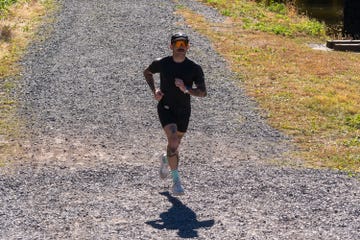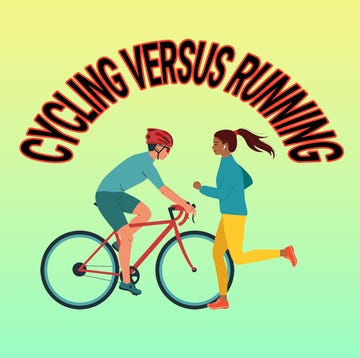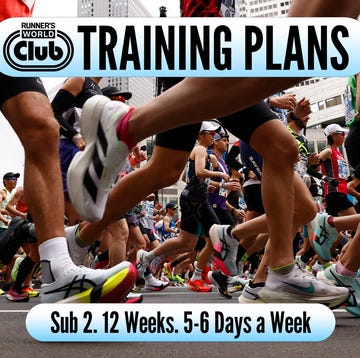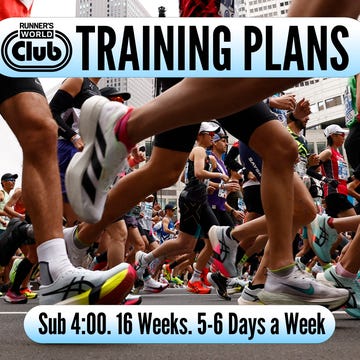‘IN JUST ABOUT EVERY RACE, I LOOKED FOR A WAY TO QUIT.’
This wasn’t a novice runner I was talking to. It was one of the best athletes in the world, who admitted to me that they searched for an out during every race. This isn’t something to be ashamed of. We all experience hard runs, and at some point or another feel a strong urge to quit. At first, it’ll be a whisper, before turning into a scream. An internal debate soon follows; an angel and a devil on each shoulder argue over whether we’ve got it or should call it quits. Finally, we experience an urge to act – to give up, slow down or to find a way to make it through.
This feel-debate-act cycle is our brain’s way of preventing us from pushing too far into the unknown and facing danger. This could be the physical kind, from running so hard that you put your health at risk, or psychological, where your ego has to face the fact that you might not be good enough to succeed.
What everyone's reading
In my book, Do Hard Things, I set out to understand why conventional notions of toughness, such as pushing through the pain, often fail. Conventional wisdom plays up the grind of trying to charge through whatever is in our way. Modern science, and the best performers, tell us it’s a lot more complicated than that. Sometimes, we need to pause, zoom out, accept and let go in order to navigate our inner chaos. When we practise opening ourselves up to discomfort, we’re better positioned to handle it and we’re free to perform up to our capabilities. Here’s how the world’s best runners do it...
Listen to your body on your next hard run
When you feel pain in your thighs while you’re running, do you immediately stop and book in a trip to the physio, or do you continue? It probably depends – is it dull, achy, burning or sharp? The feeling lets you know whether it may be a muscle tear, fatigue or just pain. Learning to distinguish between pain and injury is a vital lesson we all have to learn.
The same applies to the discomfort we feel in racing. If we can better understand the feelings, sensations and emotions we experience when things get difficult, we can figure out which ones we should listen to. Research shows that tougher athletes are more adept at making sense of whatever signals and feedback their body is giving them.
Reframe your negative thoughts
Improving this skill involves three steps: contextualising, naming and reappraising negative thoughts. The first step is adding context. Nuance adds layers, which allows us to categorise what’s going on.
The second step is to name it, which helps us to take back control – converting the ambiguous into something tangible. Those nerves you get before you give a talk? Try calling it performance adrenaline.
The final key is reframing the signal as helpful information. Can you see anxiety as excitement? That fear you feel is a reminder that caution has value. Reframing feelings as information that you can choose to listen to or let float by is the key to navigating our messy inner world.
Practise responding instead of reacting
The key to navigating discomfort is to create space between a feeling of fatigue and freaking out about it. Otherwise, we jump from the pain straight to looking for an out. That’s reacting.
Responding is having the ability to non-judgmentally work through a difficult moment. I like to call this ‘having a calm conversation’. Your inner dialogue goes like this: ‘It’s starting to hurt, but it should. I am separate from this pain. I’ll be okay.’
The best way to learn to do this is by doing hard things. Put yourself in a place of discomfort, and then learn how to non-judgmentally sit with it. It doesn’t have to be running-specific. You can train your mental muscle by sitting in an ice bath, talking in front of a crowd or simply working at your desk with your phone in front of you, sitting with the urge to check it.
Create distance and gain perspective
Learning to sit with discomfort only gets you so far. The alarm in your brain will eventually activate, no matter how collected you are. We used to think the best runners were always focused enough to deal with fatigue, while beginners primarily used distraction to push through. But that’s not true – the top marathoners use just about every coping strategy they can, and develop the capacity to zoom in and out. Sometimes they narrow their world to what’s right in front of them. Other times they zone out. When we’re facing pain and doubt, altering our perspective is a powerful tool for getting through it.
Try your hand at ‘linguistic zooming’
Research shows that when we shift from using the first person (‘I’ve got this!’) to second or third person (‘You’ve/she’s got this!’), we create distance between the experience and our emotions. This linguistic trick allows us to zoom out. By simply changing our words, we regain control, instead of simply defaulting to an easy option. Another linguistic trick is taking your inner voice outside. Give a pep talk to yourself out loud. Research from psychologist Steven Hayes showed that when people used overt self-talk, it made them accountable to whoever was in earshot. This differs to inner dialogue, which only sets the standard for yourself.
Open up your mind
Difficult moments tend to cause us to narrow. While there are many benefits to being in the here and now, one downside is your brain focuses too much on what’s going on right in front of you. The pain you’re experiencing feels as if it’ll never end and your race can feel like the most critical thing in the world.
Imagining how you’ll feel in an hour, day or month helps to bring perspective and nudges your brain out of getting stuck on the pain. How will you feel at the end, looking back on the choices you’re making right now? Will you remember how you felt in five years’ time?
Remember that mood follows action
When we’re feeling down, trying to alter our mood seldom works. But if, instead of trying to force your mood to change, you change your behaviour – getting out of bed and going for a run, for example – you often find yourself feeling better. Your behaviour dragged your mood with it. Not only does our mood follow our actions, but so does our thinking, and perception. In running, that often means taking bold action when your body is screaming at you to do the opposite. A short surge when you want to slow down or talking out loud when you think you’re out of breath can often be the trick to getting your body and mind back on track.
Steve Magness is a performance coach who has worked with Olympians and professional sports teams. His book, Do Hard Things, is out now.













